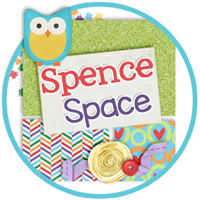During our unit on Motion, we had to apply the formula for calculating speed. We did some practice worksheets with this concept, but I wanted to use a more active, kinesthetic approach, as well.
I decided to take the students out into the hallway and do some time trials. I didn't want, however, the kids to be racing and comparing times for running. I was worried that it would either turn into chaos, be hurtful to students with slower times, or both. They already have fitness testing to make them aware of who can run the fastest, so I decided to something a little sillier...
In the hallway, we created a "racetrack," which was really a measured track with a starting line and a finish line marked on the floor with masking tape. The start and finish lines were 30 feet apart.
Each student was assigned some movement, and they were allowed to volunteer for each movement so that no one was forced out of their comfort zone. We had "safe" movements, like walking, running and jogging, for students who were a little more self-conscious, then we had skipping, army crawl, log roll and crabwalking for the more adventurous students. After each student was assigned a task, we began our trials.
I sat at the finish line with a stop watch and calculated how long it took for each student to go the 30 feet. We kept chart of the times on a piece of large chart paper that was taped to the wall. After a few trials, students began to correlate that faster movements took less time.
Finally, we brought the chart paper back into the classroom and each student was responsible for calculating his or her speed in feet per second. We then charted these results on another sheet of chart paper. As a final culminating assignment, the students graphed the comparative speeds of each activity onto graphs that they kept in their notebooks.
It is innately apparent to a middle schooler that running will be faster than a log roll, however, these calculations and graphs gave scientific and quantitative context for that tacit understanding. The students enjoyed this activity and, best of all, it was appropriate and comfortable for all of the different personalities and sensitivities of the class.










شركة تنظيف بالاحساء
ReplyDeleteشركة تسليك مجاري بالاحساء
شركة تنظيف سجاد بالاحساء
شركة تنظيف بالقطيف
شركة تنظيف بالجبيل